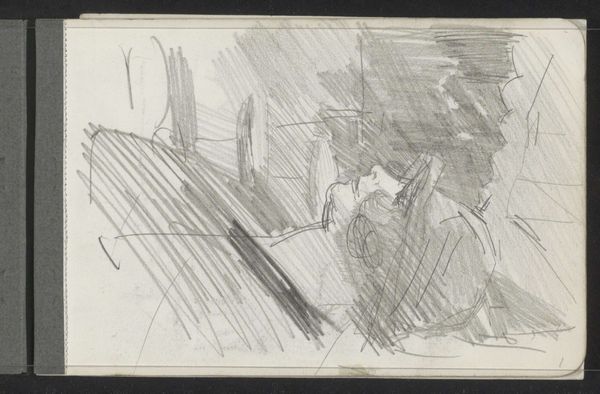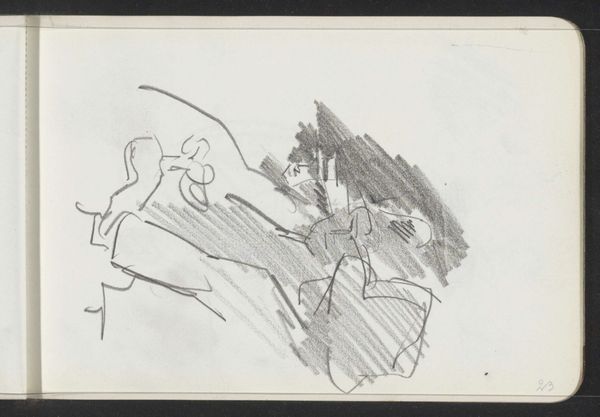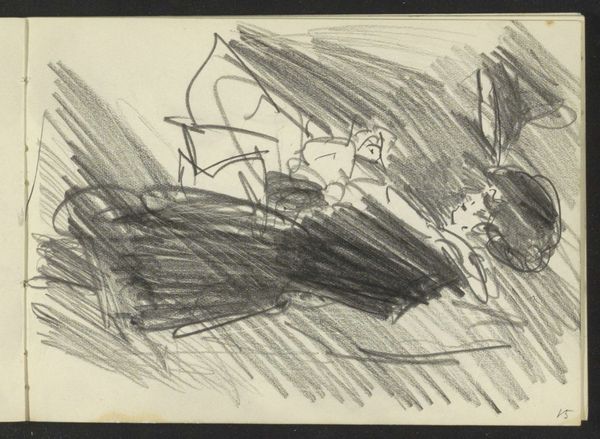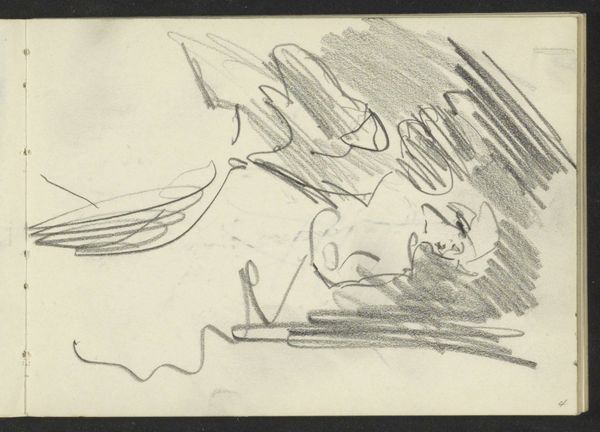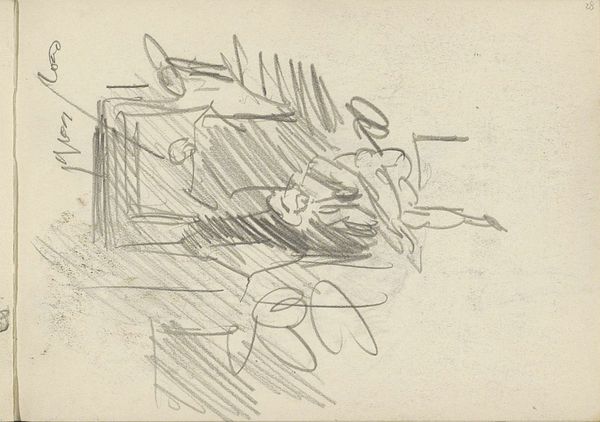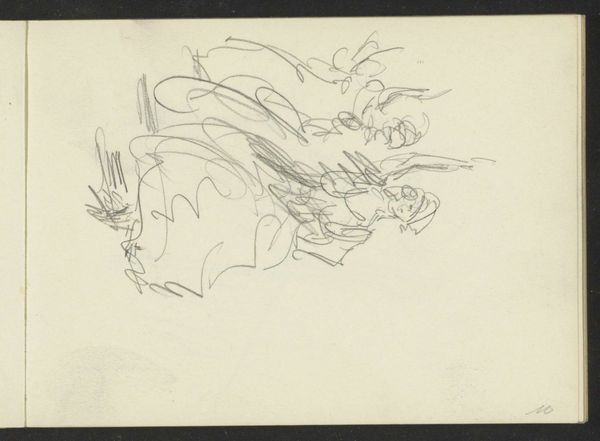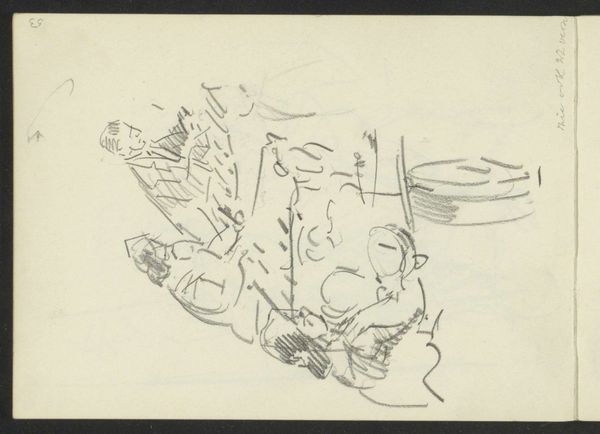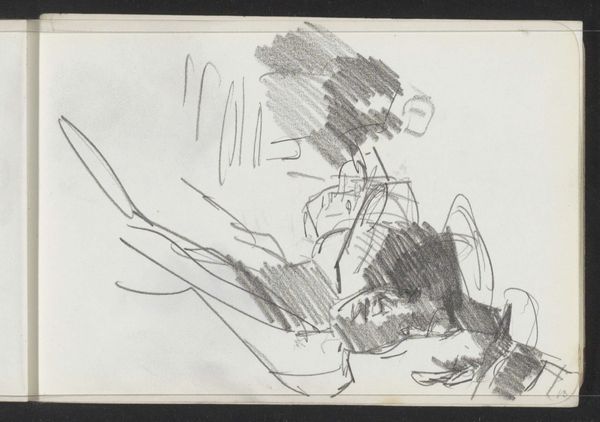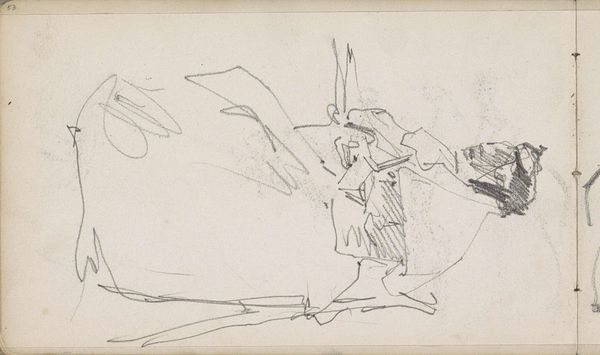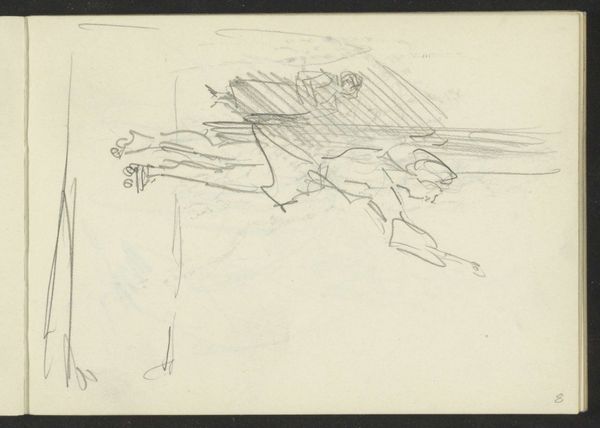
Copyright: Rijks Museum: Open Domain
Curator: Immediately, there's an intimacy and quietness conveyed, almost voyeuristic in the sketch’s raw immediacy. The figures feel very close. Editor: Indeed. Here we have "Twee staande vrouwen en een man, in profiel" (Two Standing Women and a Man, in Profile) by Isaac Israels. Created sometime between 1875 and 1934, this pencil and graphite drawing offers an intimate glimpse into the lives of its subjects, here on display at the Rijksmuseum. Curator: The use of line is striking. So economical, yet it manages to convey form and relationship with an incredible suggestive power. The cross-hatching, for example, seems less about modeling volume and more about evoking atmosphere, hinting at a certain interiority. Do you see any relationship to class dynamics, how they're situated? Editor: The subjects’ attire—what little we can discern—suggests perhaps a bourgeois setting, but Israels really seems interested in how these individuals relate to one another, possibly challenging the expectations and gender roles within this context. Notice how the two women are positioned, their bodies subtly angled toward the man. And consider that Israels was painting at a time when notions of female representation were becoming quite fraught... Curator: I’m interested in the negative space around them, as well. It doesn't feel empty, more like charged with unspoken words. How does it create meaning? Is it about the isolating effects of urban modernity, or about the fleeting nature of these relations? The women could signify power and resilience, with the man potentially representing a figure of control. Editor: Fascinating, particularly considering the formal aspects here—how he’s only captured a profile of the figures. You almost imagine them as a classical frieze, translated into modern life, though the lack of detailed facial features denies the viewer any sense of easy classification or judgment. He offers an intimate gaze. I find that in this unfinished quality—where lines break and dissolve, inviting you to fill in the gaps with your own meanings, so he can communicate beyond mere observation. Curator: Looking at it with a perspective focusing on the historical era, and this brief artistic creation evokes broader conversations on representation, gender, and power at that specific juncture in history. Editor: Precisely, by inviting interpretation without being prescriptive, we as viewers almost enter the artist’s studio.
Comments
No comments
Be the first to comment and join the conversation on the ultimate creative platform.


